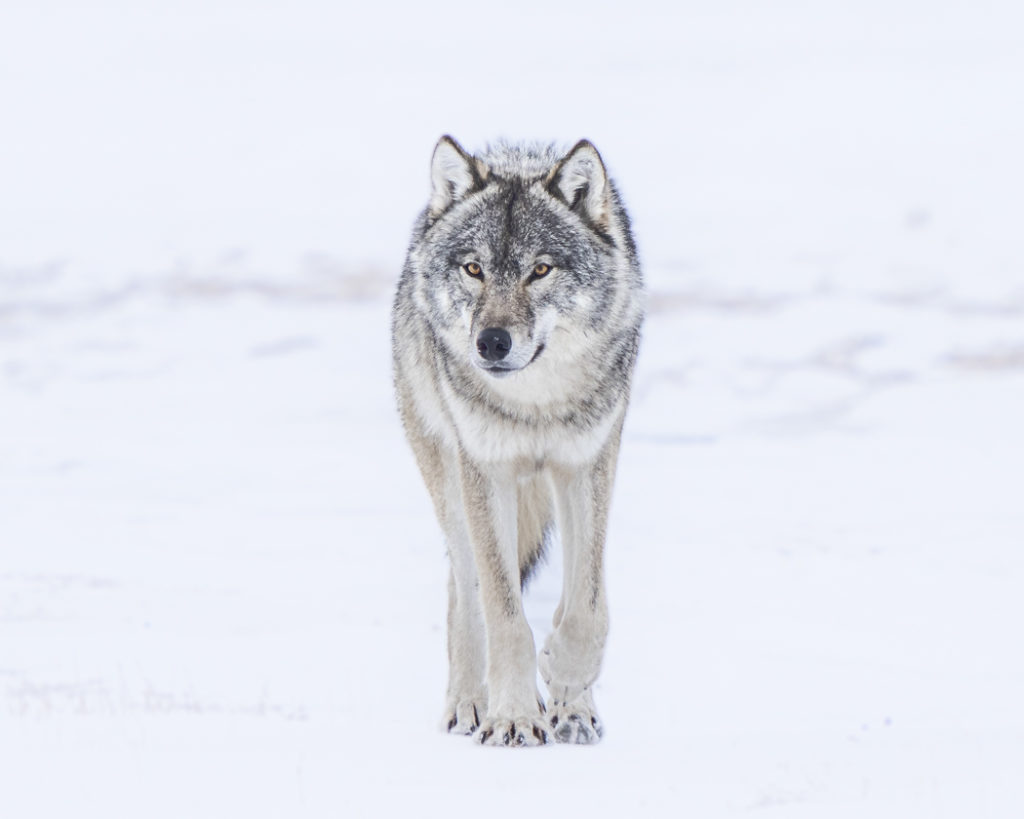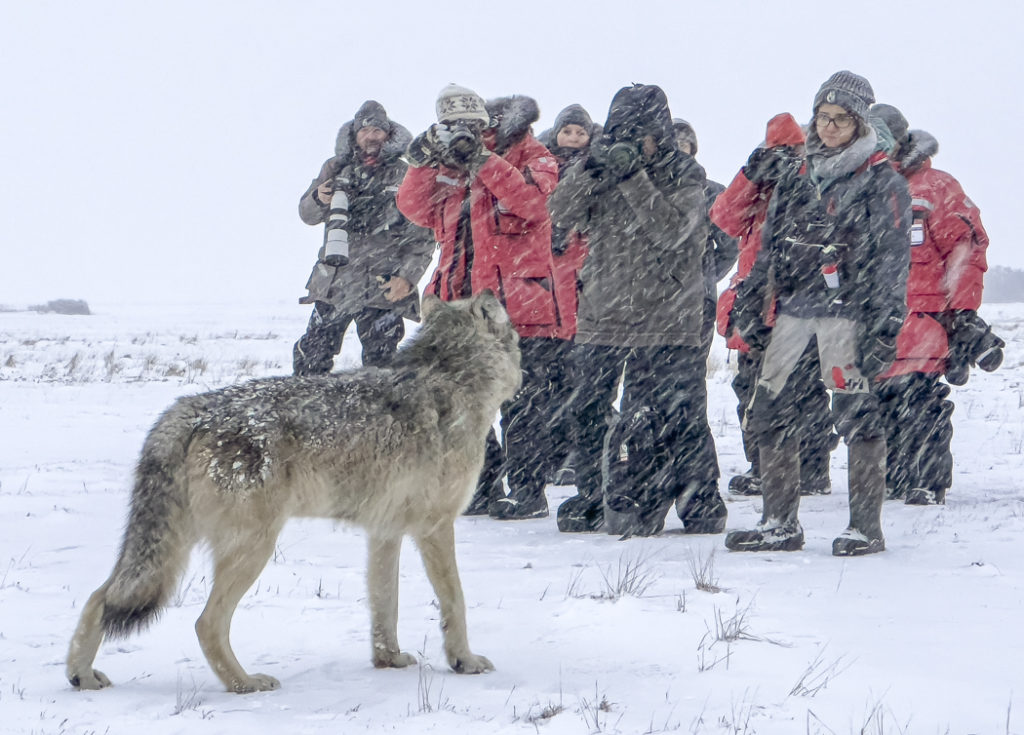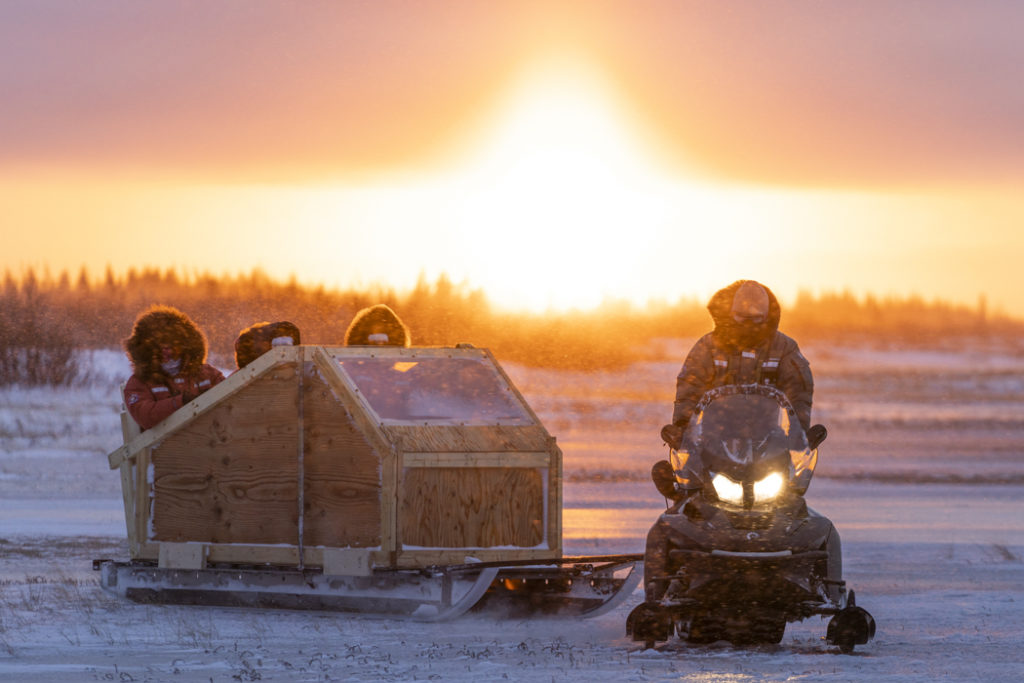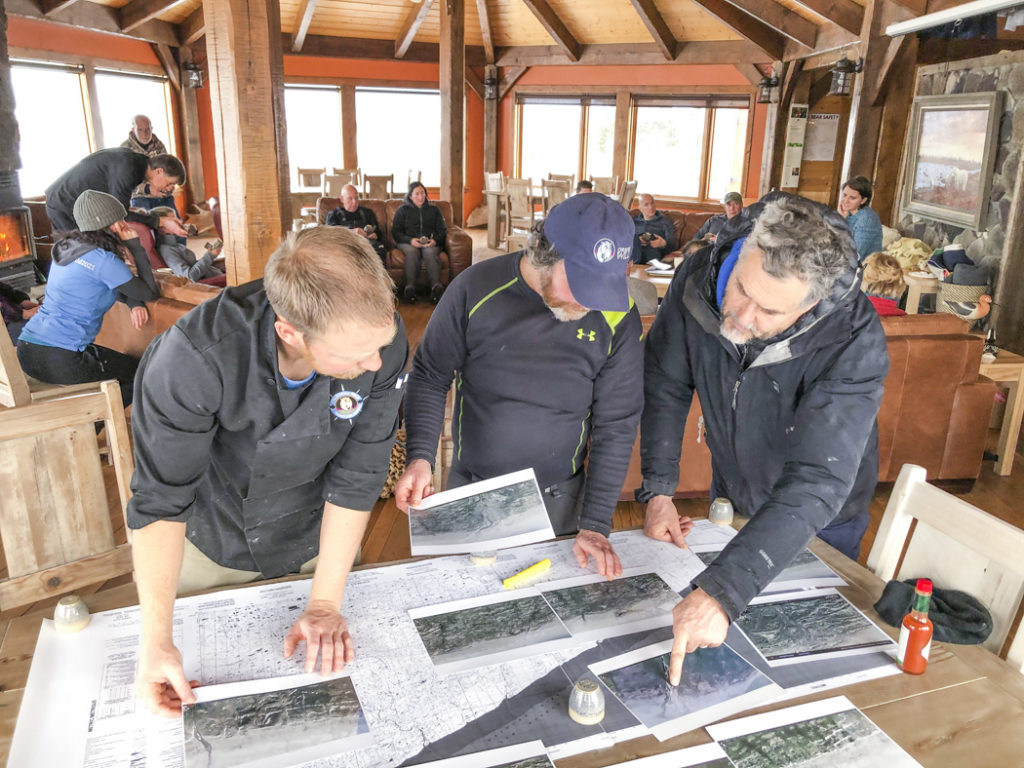Churchill Wild Guests Participate in First Cloud Wolf Study
by Jad Davenport, Churchill Wild Director of Wolf Programs
“There’s a wolf following us.” I turned and Churchill Wild guide Jess pointed at a wolf trotting a hundred feet behind us.
We were on a shakedown hike through the willows along the Opoyastin “big wind” River with a group of twelve guests at Nanuk Polar Bear Lodge. The guests were the first group of citizen scientists participating in Churchill Wild’s newest and most ambitious program—The Cloud Wolves of the Kaska Coast Expeditions—expeditions designed to learn more about these unstudied wolves (C. lupus nubilus) by tapping into what Churchill Wild does best: giving guests incredible wildlife experiences.

A cloud wolf (C. lupus nubilus) – Photo by ©Jad Davenport/National Geographic @jaddavenport
Our group stopped and quieted and cameras began to click. Ears perked and tail relaxed, the female wolf approached to within a few meters. She circled twice, sniffing the air. Then, her curiosity satisfied, she dropped her head and trotted off into the falling snow.

A female wolf approaches guests participating in Churchill Wild’s new citizen-science wolf study Photo by by Christoph and Fabienne Jansen @arctic_wild
Everywhere else in the world, due to centuries of persecution, wolves flee from the scent and sight of humans. Many wolf biologists I’ve spoken with over the past year say they can count the number of times they’ve observed wolves in the wild on two hands. And yet, here at Nanuk, in the heart of an uninhabited wilderness the size of California, wild wolves thrive. Unimpressed and unafraid of humans, they carry on with their daily lives just as they have since the last ice age.
These remarkable wolf encounters, and the fact that the wolves have never been studied, are what inspired Churchill Wild to develop the new Wolf Programs. As part of the programs, Churchill Wild offers special 10-day participatory field studies (only at Nanuk Lodge), that meld the magic of viewing wild wolves with the enrichment and sense of mission that comes from working as a naturalist on a scientific study.
Over the next few weeks, guests went out daily on ATVs and snowmachine-drawn sleds in search of wolves and wolf signs. Backed by evening presentations on wolf biology and natural history, guests learned how to set up and maintain a network of 16 trail cameras to help with census and territory studies. Working in teams, guests searched for and collected frozen scat for DNA analysis. Happy hour gatherings over Merlot and smoked salmon often morphed into informal sessions of ‘name-that-wolf’ as guests shared their images and sought to identify individual wolves.

Out on safari at sunset – Photo by Jad Davenport/National Geographic @jaddavenport
We were fortunate. While wolves are wide-ranging and unpredictable, this pack passed by the lodge every five to six days during their long-ranging patrols. Sometimes they were meters away from the decks, playing with the moose antlers and beluga vertebrae in the front boneyard or teasing a resident polar bear, and other times they were distant silhouettes far out on the tundra.
Wolves, of course, weren’t the only wildlife preparing for winter. During our walking and motorized safaris, the groups also observed and photographed dozens of polar bears (unusual for this time of year), snowy owls and even a lone arctic fox.
The observations, photographs and data collected from the expeditions are being compiled into an annual report that will be made available not just to Churchill Wild guests but also to the wider wolf-research community. Moving forward with the study, Churchill Wild is reaching out to local shareholders including the surrounding First Nations and communities to learn more about traditional knowledge and their relationships with the wolves.

Mapping out wolf territories along the Kaska Coast – Photo by ©Jad Davenport/National Geographic @jaddavenport
On one of the last afternoons of the 2021 field study, our group hiked to the edge of the sea ice and watched as fourteen wolves made their way past, single file. While photographers clicked away capturing photos to help us identify individuals, a couple of the guests set up our shotgun microphone and digital recorder. Then our group, by now experienced howlers, tipped back their heads and called out to the wolves. The wolves stopped and responded in kind. And for the next few minutes, we sang back and forth, not just for science, but for the pure joy of being out in the wilderness among the last truly wild wolves.

Ten of the fourteen members of the Opoyastin Pack – Photo by Christoph and Fabienne Jansen @arctic_wild
Churchill Wild has announced additional small-group expeditions this year in March and November. March offers great opportunities to observe social behaviour including courtship and mating, while November is when the packs gather and the pups of the year go out on their first hunts.









